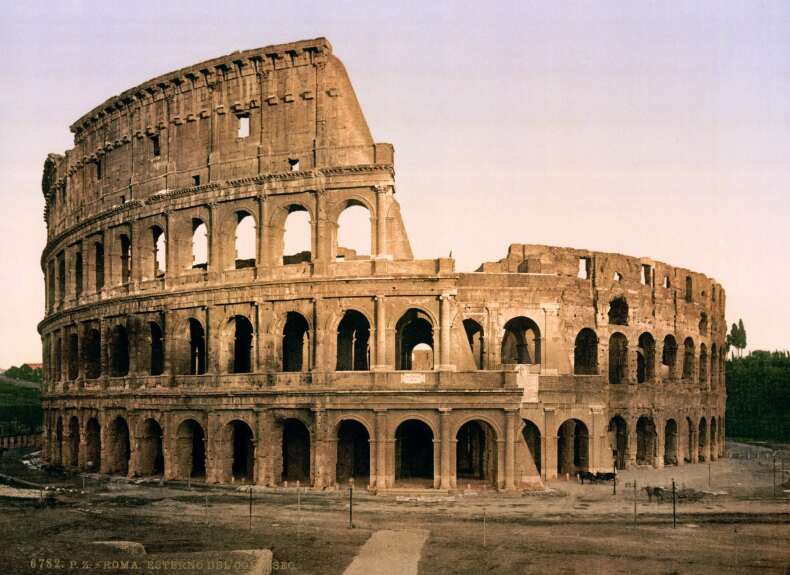Roman art is a showcase of the grandeur and brilliance of one of history’s greatest civilizations. From big architecture to minute mosaics, the Romans left an undying mark on the face of the artistic world. Influenced by the Greeks yet uniquely their own, Roman art was a reflection of the complexities of Roman society, politics, and culture. In this post, let us look at the multiple forms of Roman art as well as its key elements and how it has an enduring impact on the whole world.
Table of Contents
ToggleWhat is Roman Art?
All artistic expressions that arose during the Roman Empire between 509 BCE and 476 CE have been classified under the term Roman art, consisting of architecture, sculpture, painting, mosaics, and decorative arts. Even though they were very dependent on Greek traditions, they took what was theirs and adapted it innovatively to make their own, fitting for their diverse, multicultural empire.
Also, read about Ancient Greek Art.
Essential Roman Characteristics of the Art
Pragmatism and Realism
Roman art was about functionality and reality. Representations of figures in Roman art were not idealistic like those of Greek art; instead, people and their work in life, wrinkles, scars, and such were reflected in the figures of the sculptures. Even architectural designs had to be built for practical use and durability.
Fusion of Cultures
As the Roman Empire expanded, it adopted artistic influences from the regions it conquered. Egypt, Etruria, and Persia, to name a few, were absorbed into the melting pot of styles and techniques enriched by this blending of cultures.
Propaganda and Power
Art was propaganda for the Romans. Emperors commissioned great monuments, statues, and reliefs to celebrate victories, proclaim their divine right to rule and glorify the empire. Public art became a constant reminder of the dominance and achievements of Rome.
The Various Types of Roman Art
Architecture
Perhaps the most lasting testament to their artistic success is Roman architecture. Here, the utility was married with grandeur. The arch, vault, and dome were all innovations.
Notable Cases:
- The Colosseum: A massive amphitheater for gladiatorial games and public spectacles, demonstrating ancient Roman engineering.
- The Pantheon: Known for its stunning dome, it is one of the most preserved structures from ancient Rome.
- Aqueducts: These structures exemplify practicality, carrying water across vast distances.
Sculpture
From colossal statues to delicate busts, the emperors dominate the images with gods and ordinary citizens.
- Portraiture: The Romans specialized in realistic bust portraiture that captures individuality as well as personal characteristics.
- Relief Sculptures: Decorative monuments describing past events, such as Trajan’s Column, outlining the triumph of the emperor in battles.
Painting
Roman wall paintings, preserved at the Pompeii and Herculaneum sites, reveal a glimpse of their daily life and aesthetics.
- Frescoes: Bright wall paintings on villas and public buildings, depicting mythological themes, landscapes, or still-life compositions.
- Styles: Roman paintings emerged in four styles, ranging from simple ornamental designs to super-complicated 3D illusions.
Mosaics
Mosaics were a form of decorative art on both the walls and floors of Roman houses and public spaces. Many of them depicted mythological scenes, animals, and other complex geometric designs.
- Significance: Mosaics served aesthetic purposes apart from symbolizing wealth and sophistication.
Decorative Arts
Romans decorated their lives with smaller artistic creations, such as pottery, jewelry, and metalwork. These objects were both useful and exquisitely crafted.
Influence of Greek Art on Roman Art
Roman art is strongly inspired and influenced by Greek art, so it can be said that the art of both nations is “Greco-Roman.” They paid much respect to Greek culture and imitated most of their techniques or styles. While Greek art is idealistic and heavenly in expression, Roman art is practical and earthy.
The Role of Art in Roman Society
- Public Spaces: Art formed an essential element of public space: from statues in forums to elaborate decorations in baths, it educated, inspired, and entertained citizens.
- Resident Houses: In wealthy Roman houses, art was a symbol of status. Paintings, mosaics, and sculptures in the interior reflected the taste and wealth of the owner.
- Religious Contexts: Much of the religious art included temples with sculptures representing different gods and goddesses. These expressed the religious and cultural values of the day.
Legacy of Roman Art
Roman art laid the foundation for much of Western art and architecture. The techniques and styles developed by the Romans influenced the Renaissance and continue to inspire contemporary art and design.
- Architectural Influence: Roman innovations like the arch and dome remain central to modern construction.
- Cultural Influence: Roman themes and motifs appear in literature, film, and popular culture.
Some Interesting Facts About Roman Art
- Vivid Colors: Roman statues and buildings were painted with brilliant paints in bright colors, but these have faded over time.
- Hidden Humor: Some mosaics included humorous elements, such as caricatures of famous figures.
- Recycling Art: Romans often recycled older art, using materials from earlier pieces in new creations.
Conclusion
Roman art is a living history of a civilization that promoted innovation, practicality, and beauty. The varied forms—such as awe-inspiring architecture, intricate mosaics, and more—manifest the fine artistic genius of the Romans even today. Whether you admire the grandeur of the Colosseum or the subtle intricacies of a mosaic, discovering Roman art is like time travel to the grandeur of ancient Rome.





